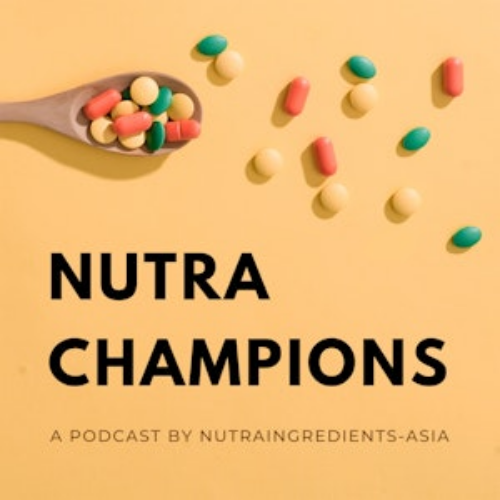‘Staggering finding’: Only 12% of Malaysian children found to be lactose tolerant – study

Prevalence of lactose malabsorption was 58 per cent, while that of lactose intolerance was 29.8 per cent. Only 12.3 per cent of the children were found to be lactose tolerant.
Lactose malabsorption refers to the failure to digest or absorb lactose in the small intestine.
An individual with lactose malabsorption could also develop symptoms of lactose intolerance, such as abdominal pain, bloating and diarrhoea.
The study was conducted by researchers from Universiti Kebangsaan Malaysia, with findings published in Archives of Osteoporosis.
This study aimed to find out the prevalence of lactose intolerance and lactose malabsorption in children.
It also aimed to find out how lactose intolerance and malabsorption would impact calcium intake and bone health status, since lactose intolerance could potentially lead to a lower dairy and milk intake.
Involving 400 children between 9 and 11 years old from the urban areas in the Klang Valley, the study was conducted between Jun 2015 and Feb 2017.
Lactose tolerance test was performed by measuring blood sugar levels. Blood samples were obtained by the finger-prick method at fasting and 30 minutes after intake of lactose solution.
A rise of blood glucose level of greater than 1.1 mmol/L was considered normal and a failure of blood sugar to rise to 1.1 mmol/L from baseline indicated either lactose malabsorption or lactose intolerance.
Calcium intake was assessed using a 24-hr dietary recall interview and food frequency questionnaire (FFQ).
High prevalence
First, the researchers found that there was a high prevalence of both lactose malabsorption and lactose intolerance in Malaysia children.
The rate of lactose malabsorption was 61.5 per cent among Malays and 54.5 per cent among Chinese children, which the researchers said was the “most staggering” finding. The study excluded Indian children mainly due to the lack of successful recruitment.
On the other hand, the prevalence of lactose intolerance was 22.5 per cent for Malay children and 37 per cent for Chinese children.
Only 12.3 per cent and 16 per cent of Malay and Chinese children respectively were lactose tolerant.
“LI (lactose intolerance) was diagnosed among Malay and Chinese children.
“The most staggering finding was that 61.5% Malay and 54.5% Chinese children, respectively had LM (lactose malabsorption).
“The higher prevalence of LM is rather worrying as it could develop to LI…The high prevalence of lactose malabsorption in this study is consistent with the results of previous studies conducted in the Asian region,” the researchers said.
The researchers explained that the deficiency of lactase – the enzyme which breaks down lactose into galactose and glucose in the small intestine – was commonly associated with lactose malabsorption and lactose intolerance.
Impact on calcium intake
In line with the study hypothesis, lactose tolerant children were found to have a significantly higher intake of calcium as compared to those who were lactose intolerant.
Based on the 24-hr dietary recall, children who were lactose tolerant took in 498 ± 336.5mg of calcium per day, significantly higher than children who were lactose intolerant, who took 425.7 ± 323.8mg of calcium per day.
The amount of calcium that children who were suffering from lactose malabsorption was even lower at 375.6 ± 262.3 mg per day.
“LI may influence individuals to decrease CI (calcium intake) especially milk and dairy product consumption, due to the presence of gastrointestinal symptoms.
“Our result found that the intake of calcium was significantly higher among lactose tolerant as compared to children with LM and LI for the 24-h DR.”
Association with bone health
The study findings showed no significant relationship between calcium intake and bone health status. Such observations were also seen in other studies involving children and adolescents, the researchers said.
For this study, the researchers measured bone health status using bone ultrasound attenuation (BUA).
The BUA for lactose intolerant, lactose malabsorption, and lactose tolerant children was 71.7 ± 14.2, 71.3 ± 11.4, and 74.7 ± 10.3 respectively. The differences between the three groups. was insignificant, with a p-value of more than 0.05.
“Even though our findings revealed neither dietary calcium nor lactase deficiency have a significant impact on bone health status, avoidance or low amount of dairy intake among children with lactose intolerance and lactose malabsorption may affect the need for adequate calcium intake for these growing children to develop healthy bones and optimum PBM (peak bone mass),” the researchers pointed out.
Source: Archives of Osteoporosis
Prevalence of lactose intolerance and malabsorption among children of two ethnic groups from the urban areas of Malaysia and its relation to calcium intake and bone health status
DOI: 10.1007/s11657-021-01053-x.
Authors: Makbul IAA, Daud NM, Yahya NFS, Aziz NA.
















